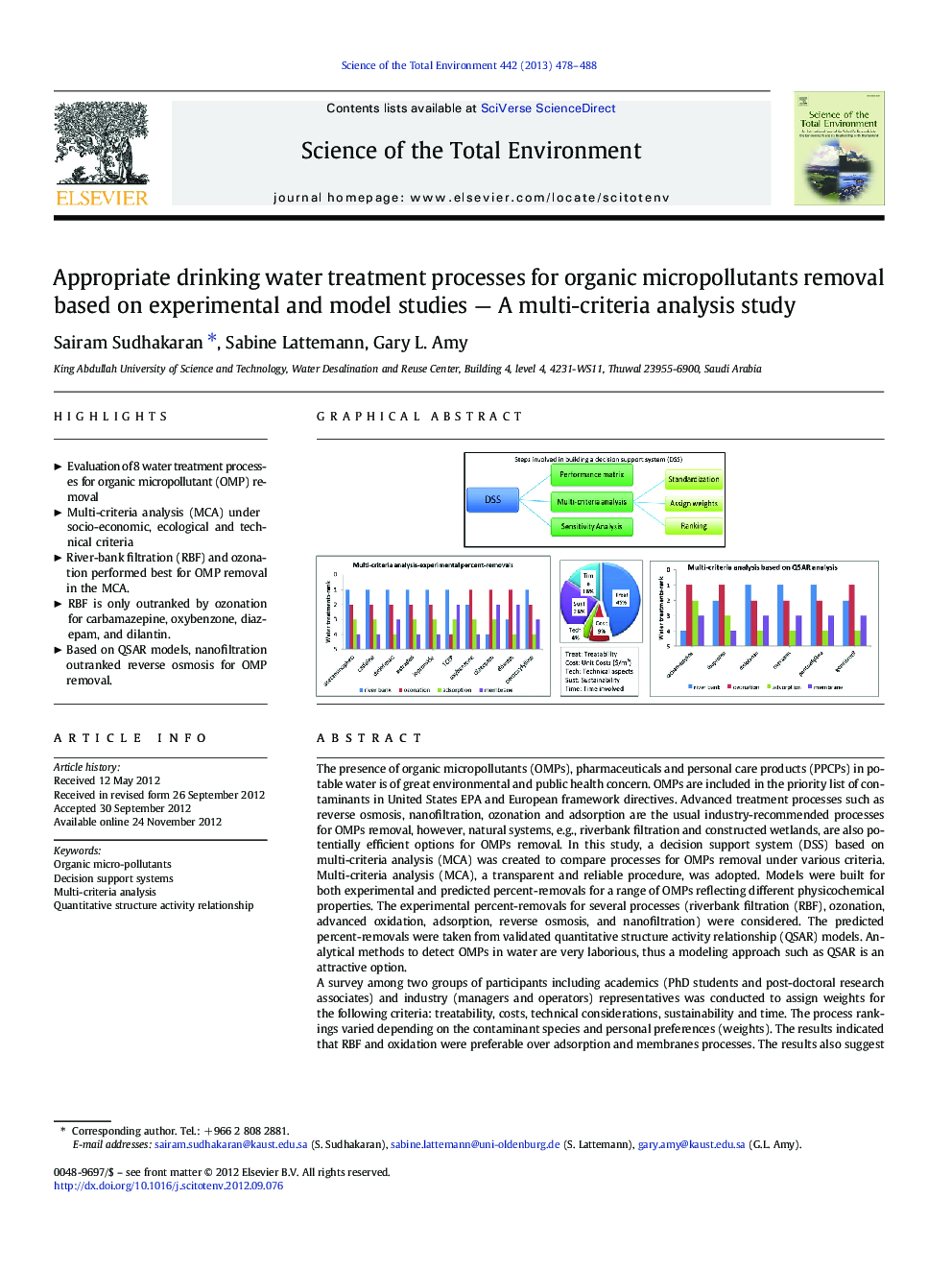| کد مقاله | کد نشریه | سال انتشار | مقاله انگلیسی | نسخه تمام متن |
|---|---|---|---|---|
| 4429020 | 1619811 | 2013 | 11 صفحه PDF | دانلود رایگان |

The presence of organic micropollutants (OMPs), pharmaceuticals and personal care products (PPCPs) in potable water is of great environmental and public health concern. OMPs are included in the priority list of contaminants in United States EPA and European framework directives. Advanced treatment processes such as reverse osmosis, nanofiltration, ozonation and adsorption are the usual industry-recommended processes for OMPs removal, however, natural systems, e.g., riverbank filtration and constructed wetlands, are also potentially efficient options for OMPs removal. In this study, a decision support system (DSS) based on multi-criteria analysis (MCA) was created to compare processes for OMPs removal under various criteria. Multi-criteria analysis (MCA), a transparent and reliable procedure, was adopted. Models were built for both experimental and predicted percent-removals for a range of OMPs reflecting different physicochemical properties. The experimental percent-removals for several processes (riverbank filtration (RBF), ozonation, advanced oxidation, adsorption, reverse osmosis, and nanofiltration) were considered. The predicted percent-removals were taken from validated quantitative structure activity relationship (QSAR) models. Analytical methods to detect OMPs in water are very laborious, thus a modeling approach such as QSAR is an attractive option.A survey among two groups of participants including academics (PhD students and post-doctoral research associates) and industry (managers and operators) representatives was conducted to assign weights for the following criteria: treatability, costs, technical considerations, sustainability and time. The process rankings varied depending on the contaminant species and personal preferences (weights). The results indicated that RBF and oxidation were preferable over adsorption and membranes processes. The results also suggest that the use of a hybrid treatment process, e.g., combining a natural system with an advanced treatment (oxidation) process, may provide benefits for OMPs removal.The proposed DSS can be used as a screening tool for experimental planning or a feasibility study preceding the main treatment system selection and design. It can also be considered as an aid in assessing a multi-barrier approach to remove OMPs.
Figure optionsDownload as PowerPoint slideHighlights
► Evaluation of 8 water treatment processes for organic micropollutant (OMP) removal
► Multi-criteria analysis (MCA) under socio-economic, ecological and technical criteria
► River-bank filtration (RBF) and ozonation performed best for OMP removal in the MCA.
► RBF is only outranked by ozonation for carbamazepine, oxybenzone, diazepam, and dilantin.
► Based on QSAR models, nanofiltration outranked reverse osmosis for OMP removal.
Journal: Science of The Total Environment - Volume 442, 1 January 2013, Pages 478–488